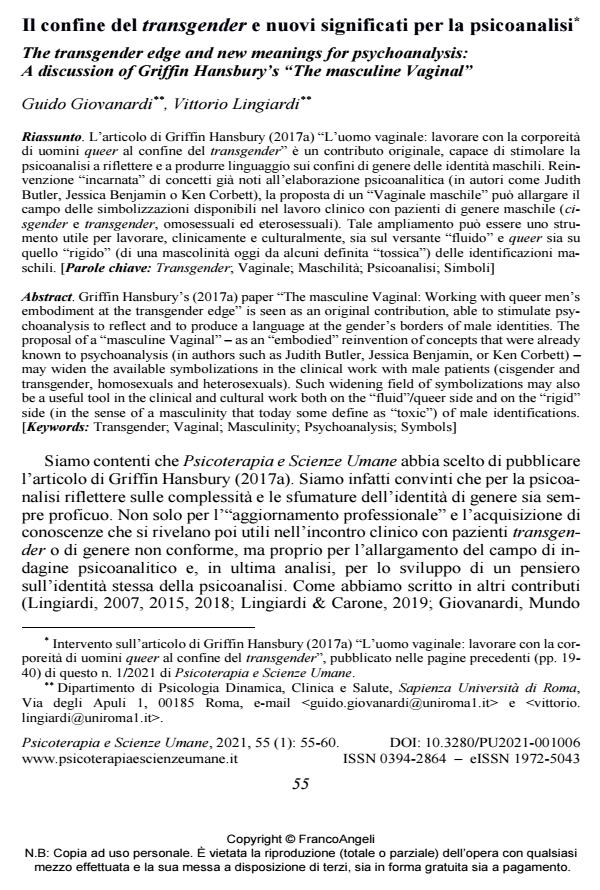The transgender edge and new meanings for psychoanalysis: A discussion of Griffin Hansbury’s "The masculine Vaginal"
Journal title PSICOTERAPIA E SCIENZE UMANE
Author/s Guido Giovanardi, Vittorio Lingiardi
Publishing Year 2021 Issue 2021/1
Language Italian Pages 6 P. 55-60 File size 255 KB
DOI 10.3280/PU2021-001006
DOI is like a bar code for intellectual property: to have more infomation
click here
Below, you can see the article first page
If you want to buy this article in PDF format, you can do it, following the instructions to buy download credits

FrancoAngeli is member of Publishers International Linking Association, Inc (PILA), a not-for-profit association which run the CrossRef service enabling links to and from online scholarly content.
Griffin Hansbury’s (2017a) paper "The masculine Vaginal: Working with queer men’s embodiment at the transgender edge" is seen as an original contribution, able to stimulate psychoanalysis to reflect and to produce a language at the gender’s borders of male identities. The proposal of a "masculine Vaginal" - as an "embodied" reinvention of concepts that were already known to psychoanalysis (in authors such as Judith Butler, Jessica Benjamin, or Ken Corbett) - may widen the available symbolizations in the clinical work with male patients (cisgender and transgender, homosexuals and heterosexuals). Such widening field of symbolizations may also be a useful tool in the clinical and cultural work both on the "fluid"/queer side and on the "rigid"side (in the sense of a masculinity that today some define as "toxic") of male identifications.
Keywords: Transgender; Vaginal; Masculinity; Psychoanalysis; Symbols
Guido Giovanardi, Vittorio Lingiardi, Il confine del transgender e nuovi significati per la psicoanalisi in "PSICOTERAPIA E SCIENZE UMANE" 1/2021, pp 55-60, DOI: 10.3280/PU2021-001006